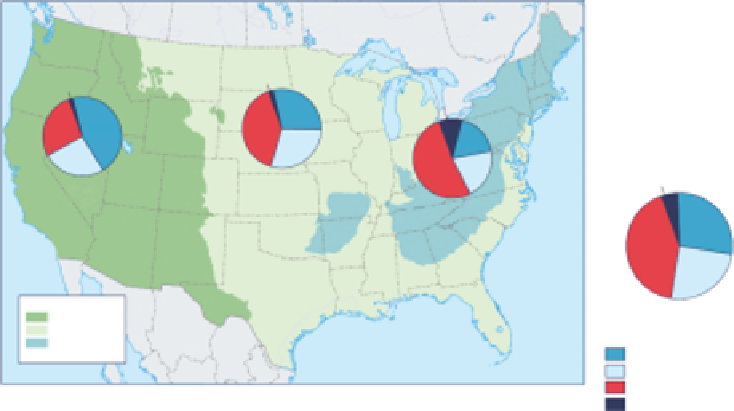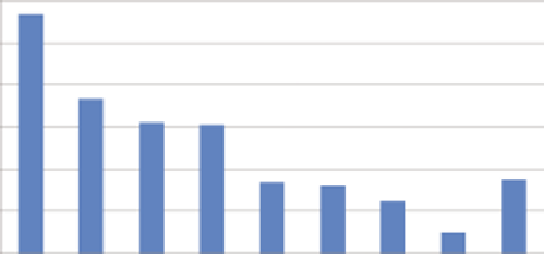Environmental Engineering Reference
In-Depth Information
2.0%
1.7%
2.0%
29.0%
45.1%
40.0%
27.4%
25.9%
18.2%
29.0%
51.8%
20.4%
Plains and lowlands
242,264 stream miles
5.0%
We st
152,425 stream miles
Eastern highlands
276,362 stream miles
28.2%
41.9%
24.9%
WSA mega regions*
We st
Lowlands
Eastern highlands
National biological
quality
Good
Fair
Poor
Not assessed
*
Based on Omernik Level III ecoregions
FIGURE 7.12
Condition of wadeable streams. (From USEPA,
Wadeable Streams Assessment: A
Collaborative Survey of the Nation's Streams
, U.S. Environmental Protection Agency, Ofice of Research and
Development, 2006.)
7.9 INVASIVE SPECIES
Eugene Odum, one of the great pioneers of modern ecology and the author of
Fundamentals of
Ecology
(Odum 1953) introduced the concept of the interdependence of all the actors on the stage,
biotic and abiotic. Those concepts are essentially the basis for some of the techniques discussed in
this chapter, such as the concepts of aquatic condition and integrity.
One of the greatest causes of disturbance is the introduction of new actors onto the stage. Introduced
or invasive species often cause great disruptions in native aquatic (or terrestrial) populations. Several
of these new actors, such as the zebra mussel, were discussed in the preceding chapter.
The USGS maintains the Nonindigenous Aquatic Species (NAS) information system as a cen-
tral repository for spatially referenced biogeographic accounts of nonindigenous aquatic species.
A search of the NAS database (February 2013; http://nas.er.usgs.gov/) indicated that species that
have been introduced into the United States include 668 species of ish, 49 species of amphibians
Pathways for fishes
300
250
200
150
100
50
0
StockedAquarium
release
Bait
release
UnknownCanal Aquaculture Hitch-
hiker
Dispersed
Other
FIGURE 7.13
Major pathways for the freshwater introduction of exotic ish. (Based on data from the USGS
Nonindigenous Aquatic Species Database, 2013.)


Search WWH ::

Custom Search